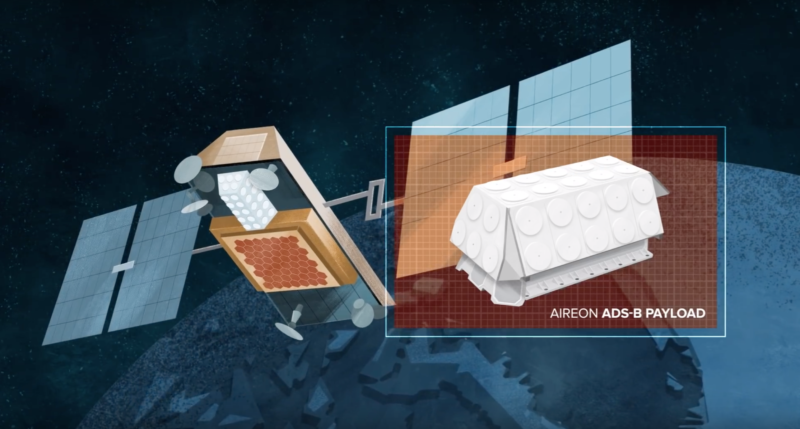Prestwick Centre is the home of the NATS Oceanic Area Control Centre, controlling Shanwick airspace within the North Atlantic (NAT) region from the Azores (45 degrees north) to the boundary of Iceland (61 degrees north), and from the west coast of Europe to 30 degrees West, approximately 633,000 square miles of airspace.
The introduction of Aireon’s space-based ADS-B (Automatic Dependent Surveillance – Broadcast) service in March 2019 transformed the NAT operation, giving air traffic controllers access to real-time position reporting for the first time. This has made it possible to safely reduce the big c40 nautical mile (nm) separations between aircraft to c14nm, allowing them to take advantage of the most efficient routes and levels, whilst also allowing us to detect any deviations from clearances much earlier.
The NATS Analytics team – with backgrounds ranging from data science, mathematics and statistics to aeronautical engineering and air traffic control – was instrumental in producing the safety assessment that supported the publication of these global separation reductions and calculated the significant safety benefits due to the frequent and accurate positional updates.
We were also able to demonstrate the benefits through improved capacity, fuel efficiency and reduced carbon emissions that would be delivered by moving to a real-time surveillance environment. These benefits are now being delivered to our airline customers and their passengers. A flight is now more likely to get their optimal flight level, speed and route, which means lower fuel burn and reduced emissions.

An oceanic controller at Prestwick Centreocean
NATS’ purpose is to “advance aviation and keep the skies safe” and monitoring airspace safety is an area which the Analytics team heavily supports. Within the Oceanic operation one of the global Key Performance Indicators is called the Collision Risk Estimate (CRE).
The CRE uses the Reich model, which was developed in the 1960s and assumes each aircraft is a box having a fixed size and approximates the risk of aircraft collision by mathematically integrating the crossing rate over a period of time when two boxes are close to each other in each dimension. It uses a number of input variables, such as reports of safety events within the Ocean (i.e. the number and duration of deviations), aircraft dimensions, aircraft navigational performance and airspace density.
This calculation not only monitors the ongoing safety of the busiest remote airspace in the world, but also drives improvement. Although the risk of collision continues to be extremely small in the NAT, initiatives such as the implementation of space-based ADS-B ensure that in an environment with ever increasing aircraft movements, continuous improvements in efficiency and safety are realised.

Fiona with the Mathematicians Working Group earlier this year.
The CRE is calculated on an annual basis by the ICAO NAT Mathematicians Working Group (MWG), which is made up of a number of contributing States reporting into the NAT Safety Oversight Group.
The NATS Analytics team provide crucial expertise and input into the risk modelling and discussions occurring at the ICAO NAT MWG, which ensures calculation of safety for transatlantic flights is accurate and improved over time.
The Analytics team’s work ranges from transforming data and fitting probability distributions, to developing accurate models for safety within the NAT as the technology and procedures evolve. It’s an extremely exciting area to work in with lots of technical aspects. Being able to work with experts from around the world and to impact the industry at a global level is a great privilege.
Comments
Please respect our commenting policy and guidelines when posting on this website.




31.08.2022
11:59
Stephen Brown
The NATS Oceanic service had previously introduced ADS-C to provide RLongSM, RLatSM and PBCS separation standards in the North Atlantic. They were also at the forefront of the use of Oceanic clearances via datalink and also of CPDLC.